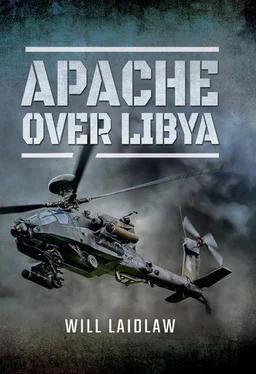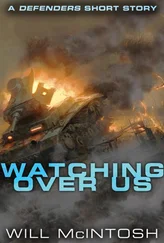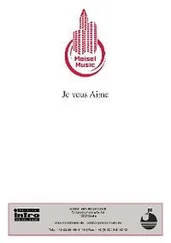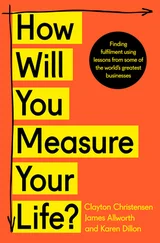But the pro-Gad scouts were already out. They were hidden and waiting all along the coast, and we were expected. We launched just before midnight on Thursday, 9 June, pointed south and arrived over Libya nine minutes later.
Six seconds after that the American lady in the wing announced, ‘Missile launch 3 o’clock!’
‘Flares! Right, 3 o’clock low!’ Charlie shouted.
Out over the side of the aircraft all four aircrew could see the missile now arcing up through the darkness, its motor burning brightly, racing directly towards them. Time slowed down to a crawl while the world around them accelerated to light speed. They braced for the impact.
From our lead aircraft, just ahead and positioning for our final run in to the target, John transmitted ‘Flares! Flares! Flares!’ in a decisive tone, followed by the briefest of pauses and then ‘Missile seen!’ – confirming what Mark and Charlie already knew and adding to the noise inside their cockpit as the aircraft’s self-defence system reacted to the missile ripping through the night towards them.
Both aircraft pushed out a rapid release of flares, briefly blinding the aircrew and identifying the aircraft like low-level shooting stars to the assembled ambush of pro-Gad chancers. We were now relying entirely on the technology inside the Apache to save us. There was fear and anger, confusion and chaos, and a missile doing Mach 2.3 towards us.
Charlie stared at the missile as though at his own mortality. Suspended there in the darkness, low through his right hand canopy, an intensely bright white flame streaked through the blackness and arced towards him. The brightness of the rocket motor and the dazzling plume in its wake captivated him. The way the missile moves is disturbing. It seems agitated, aggressive and determined. The fear is here, everywhere; there is no escape. No one is able to speak.
More flares. And the cockpit is illuminated with a double lightning flash as the white-hot flares project themselves into the night and fall away below. But on the missile comes, marauding on its demonic course to intercept the aircraft.
Another pattern of flares erupt, rushing forward into the darkness. The rotor disk above illuminates as the burning flares fall away out of sight. The missile swerves away as if seduced by the flares and then menacingly tips towards us one more time. The flares are bright enough and the missile is close enough for Charlie to see its shape, its white body and the black markings on its mid-section. Then it whips past within metres and explodes, leaving both aircraft untouched. Six seconds over Libya on their first mission and Mark and Charlie had met with and survived the SA-24. The ambush was perfect, but the missile bought the flares and now it was our turn to fight back.
While the first two missions had been novel work, this was a whole new and terrifying threat that changed our entire outlook on the operation. The long discussions in the flip-flop about what might happen and how we would deal with it were no longer just conversations and plans. Now, 40 miles from safety, low over Libya, four of us had arrived at the point where theory meets reality. We could turn and run or we could stay and fight. Running was the right thing to do. Khamis had missed, we had survived, and returning to Mother to fight another day would still be a small victory. The other option – fighting – would make us feel better, but not much more. Perhaps the shooter would be killed and denied the ability to try again, but we would come closer to being shot down in the process.
Getting stuck into a fight when triple-A or MANPADS were coming out of the dark was the wrong thing to do. It was a high stakes risk – winning would be the only satisfactory result, and getting hit would be a disaster. The thought of crashing, surviving and then finding ourselves on the run right in the middle of 32 Brigade was fearsome. Capture would be very hard to evade, and the rescue crews somewhere in Europe were still on five hours’ notice to move, leaving us very much on our own for the rest of the night and all of the following day. Anyway, who is going to try and rescue downed aircrew when the most sophisticated anti-helicopter weapon in the world is at large? Whether it was a crash landing or simply being shot out of the sky, the regime would make the most of how it defeated NATO’s last gasp. The helicopter option had failed, NATO could not now win, the rebels would be defeated and Gaddafi would hold on to power.
We chose the second option; we chose to fight.
Mark and Charlie immediately closed in on the SA-24 firing point in the dunes. While the missile was coming at them Mark had glanced at the firing point, flicked his left thumb across the ‘store’ button on the sights and sensors grip and sent the coordinates of SA-24 man to the FLIR, the gun and all his Hellfire; all of it done in a fraction of a second. The infrared drew them to a man rushing about on his own, appearing to hide the weapon and picking up another. Mark sent an instant burst of 30mm to suppress another attack.
John and I put two Hellfire in quick succession into the C2 node, delivering panic to pro-Gad right where he thought he was orchestrating hell, and we then joined our wing in destroying SA-24 man. Just as we had killed the triple-A shooters outside Brega the previous week, it was important to us to deal with this shooter too. A man who shoots and misses can reassess, try again or come back tomorrow with some friends and do better. He must be stopped, and we had to make it so if we were to survive the campaign.
With the initial target dealt with and the ambush defeated, I brought the patrol back out over the sea to safety. The irony of flying two Apaches low-level over the sea in order to check our systems were still good to continue was striking. Only a few weeks earlier we had regarded the sea as the most dangerous place to be in this aircraft. Now, when compared to the hostility from the dunes, the sea was a sanctuary, a place to regroup, calm down and to make a new plan.
The Zlitan raids of June 2011 brought home right to our core the dangers of flying in combat. We flew ten sorties into the middle of 32 Brigade in the first half of the month, with no reasonable chance of rescue if the worst were to happen. We varied our routes and times, massed fire on to targets, darted away and never crossed the coast in the same place twice. For their part, Khamis’ soldiers were adapting too. They adopted a tactic of firing flares into the air when helicopters were heard. This did two things for them: it alerted others of danger, much like lighting a signal fire, and provided illumination for them to use their NVG to locate and engage us. The scene was played out every night in the Zlitan area: we arrived, flares went up and the shooting started.
With the moon waxing gibbous and about to give pro-Gad more chance to see us than we wanted, a last mission was planned before a few nights alongside in Sicily. NATO had recognized a pattern of activity from the Al Khums-based pro-Gad SF. They were avoiding land movement by dashing up and down the coast in speedboats, conducting re-supply and disruption operations in and around the front line. While Khamis was operating well on land, keeping his weapons hidden most of the time, the regime planners had forgotten that NATO also had a watchful presence at sea. The public face of this capability was the French aircraft carrier Charles de Gaulle and the British destroyer HMS Liverpool , as well as frigates HMS Iron Duke and HMS Sutherland . These, and other less visible assets, could observe and listen without being seen themselves. They could follow and report, establish the SF routine and hand the evidence over to the NATO planners and their legal advisers.
Читать дальше












